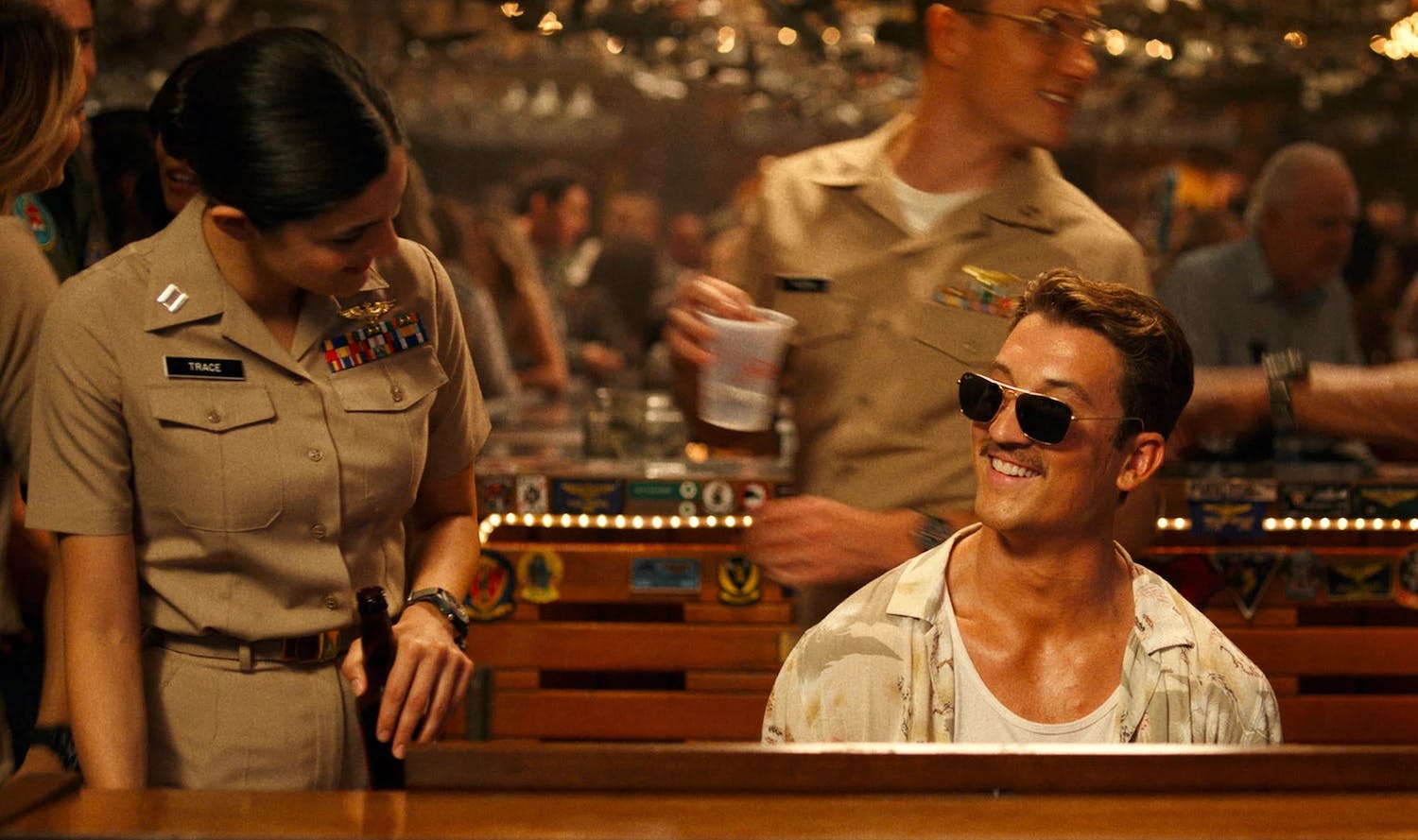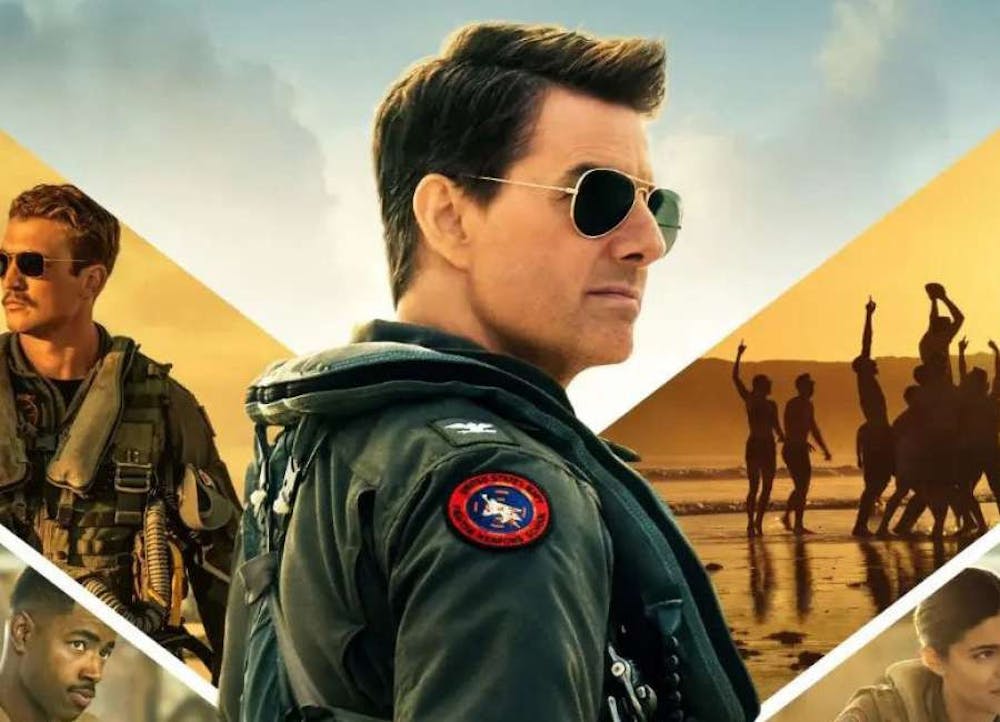“Top Gun” is not a great movie. It’s certainly good — it launched Tom Cruise into superstardom and boasts one of the most iconic soundtracks in Hollywood history — but the juvenile dialogue and stilted action will always bar director Tony Scott’s 1986 classic from greatness. The same cannot be said for its sequel 36 years in the making. Propelled by thrilling aerial sequences and an endearing story that pivots seamlessly from one emotional tone to the next, “Top Gun: Maverick” soars beyond its predecessor to remind us of the joys of experiencing not just a well-executed sequel but an original blockbuster film.
Directed by Joseph Kosinski, “Top Gun: Maverick” reintroduces the titular naval aviator, Pete “Maverick” Mitchell (Tom Cruise), over 30 years after the events of the original film. The boundary-pushing pilot is doing what he loves, serving as a test flier for the U.S. military’s most cutting edge aircraft, when he is recalled to Top Gun flight school to train a detachment of young aviators for a highly specialized combat mission. Already reluctant to step out of the cockpit and into the classroom, Maverick’s reservations grow when he discovers that the son of his late co-pilot, Nick “Goose” Bradshaw, is among the group of trainees. Goose was killed flying with Maverick during a training exercise decades earlier, an accident that Maverick has always believed is his responsibility. Now back at Top Gun and forced to confront Goose’s son, Bradley “Rooster” Bradshaw (Miles Teller), Maverick must grapple with the legacy of his decorated yet reckless past while preparing the eager aviators for a deadly mission many of them will likely not survive.
Cruise decided very early in the film’s development that the most effective way to deliver an in-the-cockpit experience for the audience was to, quite simply, put the actors in the cockpit. In the original film, the actors rode mechanized apparatuses on a soundstage, but this time, modern technology granted the audience — and the actors — a more immersive experience. Working closely with IMAX to develop top-grade cameras small enough to shoot within the confines of an aircraft cabin, Cruise and Kosinski managed to capture footage of the actors flying in Navy Pilot-operated F/A-18 fighter jets. It was a dangerous, expensive and painstaking filmmaking process, yet undoubtedly worth it. As mountains and deserts streak by the glass of the cabin, audiences are given the pilot’s perspective on just how fast it feels to be in an F/A-18 moving 1,200 miles per hour. In one of the film’s most intense sequences, Maverick’s plane blitzes around the corners of a narrow canyon, the camera’s fixed position in the cockpit relaying the dizzying sharpness of each banking turn. When he escapes the canyon by pulling the F/A-18 into a vertical ascent up a sheer cliff face, Cruise’s face contorts under the pressure of the crushing g-forces, a moment of realism that adds visceral weight to the action. The result is an experience infinitely more engrossing and authentic than that provided by the first film.

Better action, however, is not the only advantage that “Top Gun: Maverick” holds over its predecessor. Kosinski and his writers move so smoothly between the emotions their story elicits, exemplified by the climax’s blending of comedy and suspense before settling into stirring catharsis. They deftly wield the ’80s cheese that famously overwhelmed the original “Top Gun,” carefully deploying it in measured doses that never threaten to dilute the gravitas of the drama. And showing the true mark of narrative effectiveness, Kosinski and his team punctuate the sustained action with quiet moments of character, a standout being the scene in which Maverick is caught sneaking out of Penny Benjamin’s (Jennifer Connelly) window by her daughter (Lyiana Wray). “Just don’t break her heart again,” she says. With the help of excellently restrained acting by Cruise, a situation that was hilarious just seconds before turns devastating in an instant.
This is one of the more unexpected moments in a film that, except for a third act digression that trails gleefully into the territory of Cruise’s “Mission: Impossible” franchise, is never particularly groundbreaking in its narrative choices. But while the story could be more original, “Top Gun: Maverick” is ultimately blockbuster storytelling at its most authentic. Whether it is calling back to “Top Gun” with an opening sequence identical to that of the 1986 original or fulfilling the redemption arc of a brazen pilot known as “Hangman” (Glen Powell), the film consistently exudes a charming innocence about what movies can be: fun, moving, inspiring, and in a word, entertaining. It is a deeply refreshing experience, given that so many Hollywood films have seemingly lost these aspirations to their franchise-rebooting and universe-constructing agendas. People of all ages are responding to “Top Gun: Maverick” in a way they haven’t responded to an action blockbuster since the inception of the Marvel Cinematic Universe in 2008, harkening back to the days when original action films and dramas like Michael Mann’s “Heat” and Ridley Scott’s “Gladiator” swept the box office and dominated the cultural conversation. There’s obviously still an appetite for that kind of movie. Here’s to the hope that Tom Cruise isn’t the only one left in Hollywood willing to feed it.
Jack Torpey '24 (he/him) is an Arts and Culture Editor. He writes film reviews for the Reel Critic column.
Jack is studying English with a minor in Film and Media Culture. Outside The Campus, he works as a peer writing tutor at the Writing Center and is a member of the Middlebury Consulting Group.




